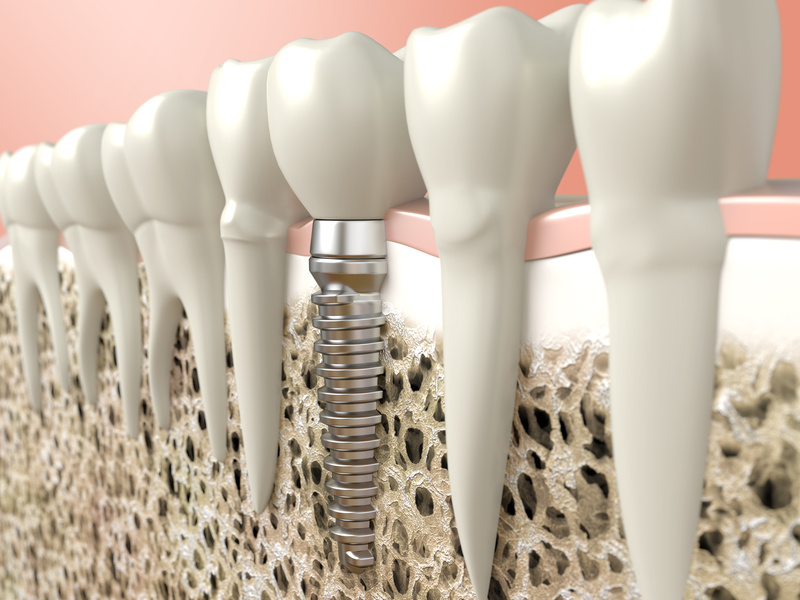Top Dental Implant Myths Dispelled — What You Really Need to Know

Written by Loudoun Dental Associates’ Implant Specialists
Dental implants are a powerful solution for missing teeth, restoring function, aesthetics, and confidence. But they’ve also attracted a lot of misconceptions. Drawing on clinical experience, research, and patient outcomes, we’re dispelling top myths so you and your dentist can make informed decisions.
Myth #1: “Dental Implants Are Uncomfortable and Recovery Time Is Too Long”
Reality & Evidence:
- Modern surgical techniques (such as minimally invasive implant placement, 3D imaging, guided surgery) reduce tissue trauma. This means fewer complications, less swelling, and often shorter recovery times.
- Typical recovery involves mild discomfort, swelling, maybe some bruising for a few days. Pain management (local anesthesia, possibly light sedation) and post-op care (ice, soft diet, prescribed meds if necessary) are standard.
- Healing phases:
- Initial healing of soft tissues (gum) in ~1-2 weeks.
- Osseointegration (“bone-anchoring” of the implant) takes several weeks to a few months depending on location, bone quality, and overall health.
- Final restoration (placing the crown or prosthesis) follows after those phases.
- Factors that affect healing time:
• Patient’s underlying health (e.g. diabetic status, smoking, osteoporosis)
• Bone volume and density—if bone grafting is needed, that adds time.
• Implant location (front teeth often heal faster than molars).
• How well post-op instructions are followed.
Myth #2: “Dental Implants Cause Migraines or Headaches”
Reality & Evidence:
- There’s no scientific evidence linking properly placed titanium dental implants to migraines, headaches, or neurological conditions in people with healthy systems.
- If a patient is experiencing headaches, other causes are more probable: TMJ disorders, bite misalignment (malocclusion), sinus issues, muscle tension, dental decay, or temporomandibular joint dysfunction.
- In very rare cases, complications like pressure on nerves (if implant is placed improperly, or if bone anatomy is shallow) can cause discomfort. But good planning—radiographs, CBCT scans, surgical guides—minimizes those risks.
Myth #3: “It’s Hard to Care for Dental Implants”
Reality & Evidence:
- Implants don’t get cavities because they’re not made of tooth enamel, but that doesn’t mean they require no care. They can suffer from peri-implantitis (gum inflammation around the implant) and bone loss, so oral hygiene is critical.
- Care routines include: brushing twice daily, flossing or using interdental brushes around the implant, routine dental checkups (every 3-6 months), professional cleanings, monitoring of gum health and bone around the implant.
- With good care, implants can last decades—many last a lifetime. Studies show high survival rates (often 90-95%+ over 10 years), dependent on patient compliance, health, implant site, and restoration quality.
Additional Myths & Clarifications
To give you an even more rounded view, here are some other myths people ask us about—and the facts.
Myth #4: “Anyone Can Get Implants, No Matter Their Oral or General Health”
Truth:
While many people are candidates, not everyone is an ideal candidate. Important considerations include:
- Sufficient bone volume and quality in the jaw. If not enough, bone grafts or sinus lifts may be necessary.
- Good oral health—gum disease must be treated first.
- Overall health: uncontrolled diabetes, heavy smoking, certain medications (like bisphosphonates), immunocompromised states may affect healing or osseointegration.
- Commitment to maintenance and hygiene.
Myth #5: “Implants Are So Expensive That They’re Not Worth the Cost”
Truth:
- Dental implants cost more upfront than dentures or bridges, but they tend to be more cost-effective long term because they:
- Preserve jawbone integrity (prevent bone resorption).
- Don’t require altering adjacent teeth (as with bridges).
- Are more durable and often require fewer replacements/repairs.
- Many practices offer financing plans, multiple-stage payment, or insurance coverage of implant parts.
- Patients should consider total lifecycle cost: initial surgery, restoration (crown/bridge), maintenance, and potential replacements.
Myth #6: “Implants Feel Totally Different Than Natural Teeth”
Truth:
- A well-designed and restored implant (with proper prosthetic design, material choice, and alignment) should feel, look, and function very closely like a natural tooth.
- Initial sensations (pressure or awareness) are normal during healing. Over time, with healthy gums and bone support, most patients adapt fully, and chewing, speaking, cleaning are similar to natural teeth.
What To Look for When Considering Dental Implants
To ensure high quality, long-lasting outcomes, here’s what to ask and what to check:
| Feature | Why It Matters |
|---|---|
| Experience & Credentials | Board-certified implant dentist or oral surgeon, published success rates, patient case studies, peer reviews. |
| Diagnostic Technology | 3D imaging (CBCT), digital planning, surgical guides → ensures safe positioning near nerves, sinuses. |
| Restoration Quality | Type of crown/abutment material (zirconia, porcelain fused to metal, etc.), design to distribute force properly, occlusion (bite) evaluation. |
| Bone & Tissue Augmentation | If needed, bone grafts or soft tissue grafts augment site → better biological integration and aesthetics. |
| Hygiene & Follow-Up Plan | Regular cleanings, maintenance, checkups; patient education; early detection of possible complications. |
Summary & Key Takeaways
- Dental implants are one of the best solutions for tooth replacement when executed properly and followed with good care.
- Many common myths arise from older techniques, anecdotal stories, or misunderstandings—not from current research and clinical standards.
- The success of implants depends not just on the surgery, but on planning, patient health, restoration quality, and long-term oral hygiene.
- If you’re considering implants, contact Loudoun Dental Associates today to discuss the procedure and we’ll be happy to answer any questions you have.

